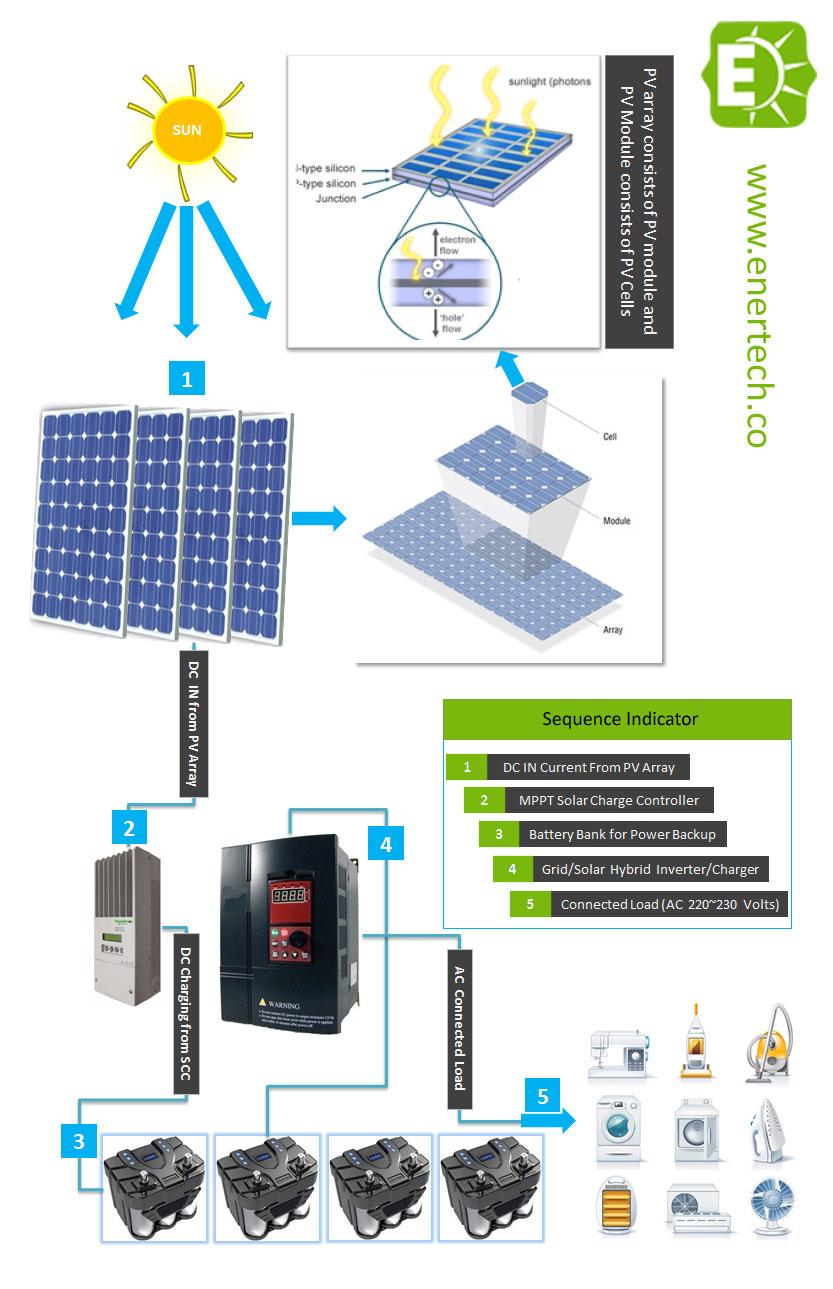An off-grid solar electric system is composed of four basic components;
Solar Panels
Charge Controllers
Batteries
Inverters
These components are necessary to have a Solar (PV) Electric system to function in proper manners.
1. Solar Panel/ Photo-voltaic modules
Solar Photo-voltaic systems use solar cells (mono crystalline, poly crystalline or thin film) to absorb photons from sunlight and convert into electricity. The PV cell consists of one or two layers of a semi conducting material, silicon or amorphous. When daylight is available the cells create an electric field across the layers causing electrons to flow. Since solar energy is measured in Watts or Kilowatt; more PV arrays you install, more watts you produce.
2. Solar Charge Controller
In order to control the power of solar panels we need a “charge controller”. Charge controller is an essential part of solar energy systems that helps charge batteries and prevent them from overcharging and flowing current back to the solar panels. Solar panels produce relatively higher voltage that can damage batteries if connected directly. A better quality (MPPT)* charge controller can draw up to 35% more power from solar panel and expand the life of batteries.
3. Batteries
Batteries are used to store energy for solar electric systems. Batteries play the role of storing the energy solar panels produce during the day and then provide back the energy needed at night. In an off-grid solar system, appliances (loads) that are powered by solar electric systems receive their power from batteries rather than directly from the output of a solar panel. There are three basic types of batteries.
Lead Acid
Sealed Lead Acid
Lithium Ion
Sealed lead acid Batteries provide better efficiency than typical lead acid batteries and are most commonly used in solar systems across the globe. Although there are many types of SLA batteries, AGM and Gel batteries have longer life span than lead acid and are more economical than lithium ion batteries. They typically provide 2 to 3 times longer backup in comparison to traditional lead-acid batteries.
4. Inverter/Charger
An inverter is the heart of the solar system. The inverter converts the DC energy from batteries/solar modules into AC power for use in our most appliances. During night Inverter can also work as grid-charger (if connected to the grid power) and recharges drained batteries to make them ready for backup again.
Mentioned below is the visual diagram to help understand the functionality of Solar Electric System.

2015 © ENERTECH [Alternative Energy Solutions Inc.] ALL Rights Reserved.
Privacy Policy | Terms of Service